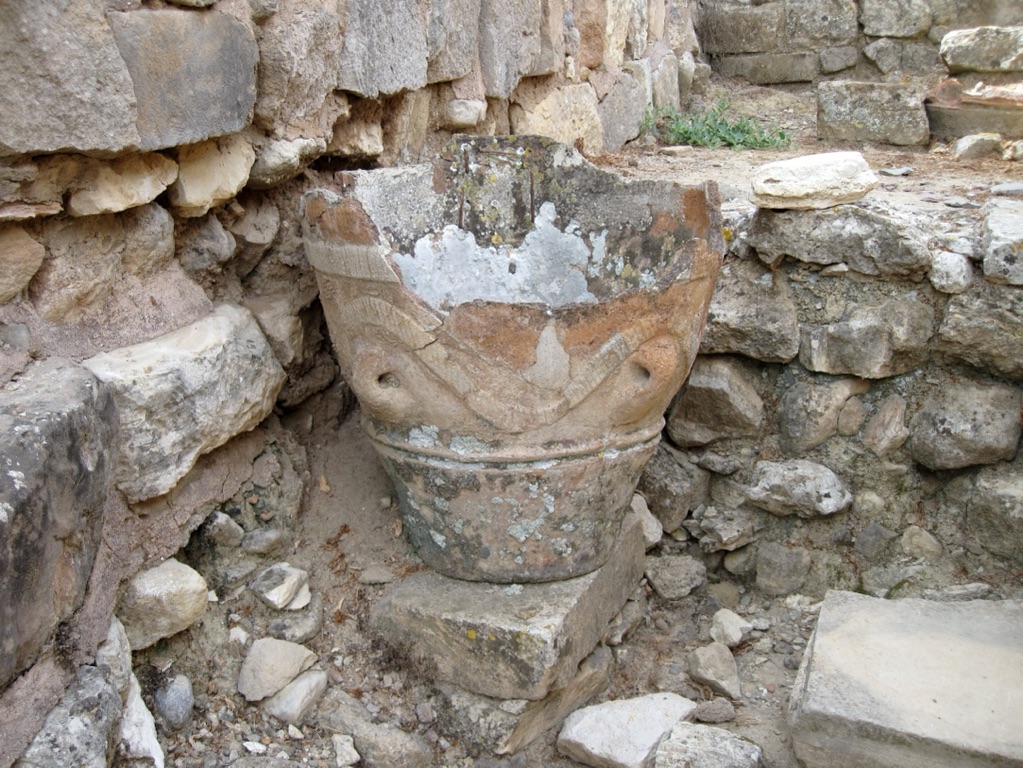The Archaeological site of Agia Triada, also known as Ayia Triada, is a significant Minoan settlement located on the island of Crete, Greece. This site has provided a wealth of artifacts and structures that offer insights into the Minoan civilization. Discovered at the turn of the 20th century, Agia Triada has been a focal point for understanding the Minoan’s complex social, economic, and religious practices. The site’s name, which means “Holy Trinity,” is a modern appellation reflecting the nearby village and Byzantine church.
Get your dose of History via Email
Historical Background of Agia Triada
The Archaeological site of Agia Triada was first excavated in 1902 by Italian archaeologist Federico Halbherr. The site’s discovery unveiled a palace-like structure, various artifacts, and frescoes that have been pivotal in understanding Minoan culture. The Minoans, a Bronze Age civilization that flourished from approximately 2600 to 1100 BC, built this site. It is believed to have served as a royal villa or a governmental complex.
After the fall of the Minoan civilization, the site was inhabited by Mycenaeans from mainland Greece. They left behind Linear B tablets, providing evidence of their administrative activities. Agia Triada has also been linked to significant historical events, such as the eruption of the Thera volcano. This event may have influenced the site’s decline. However, the area continued to be inhabited into the Iron Age, indicating its long-term importance.
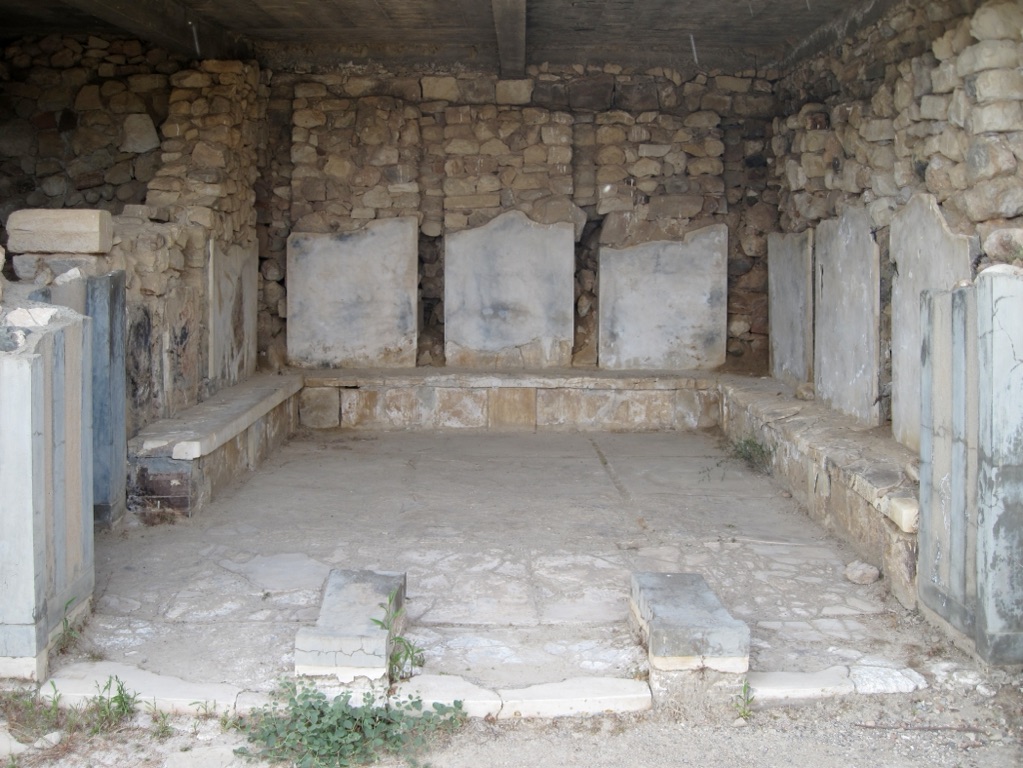
Throughout its history, Agia Triada has experienced various phases of construction and reconstruction. The site’s most notable structures, such as the mini-palace, were built during the Neopalatial period (around 1700-1450 BC). This period represents the peak of Minoan architecture and urban development. The site was later repurposed during the Mycenaean occupation and even into Roman times, showcasing a rich tapestry of historical layers.
Agia Triada’s significance extends beyond its architectural remains. The site has yielded numerous artifacts, including the famous Agia Triada Sarcophagus, which is a key source for understanding Minoan religion and iconography. The sarcophagus, along with other finds such as pottery, stone vessels, and frescoes, has helped scholars piece together aspects of Minoan life that were previously unknown.
The site’s excavation has been ongoing, with various archaeological teams uncovering new aspects of the settlement. These efforts have revealed a complex society with advanced skills in art, architecture, and administration. Agia Triada remains an active archaeological site, with each season bringing new discoveries that continue to shape our understanding of the Minoan civilization.
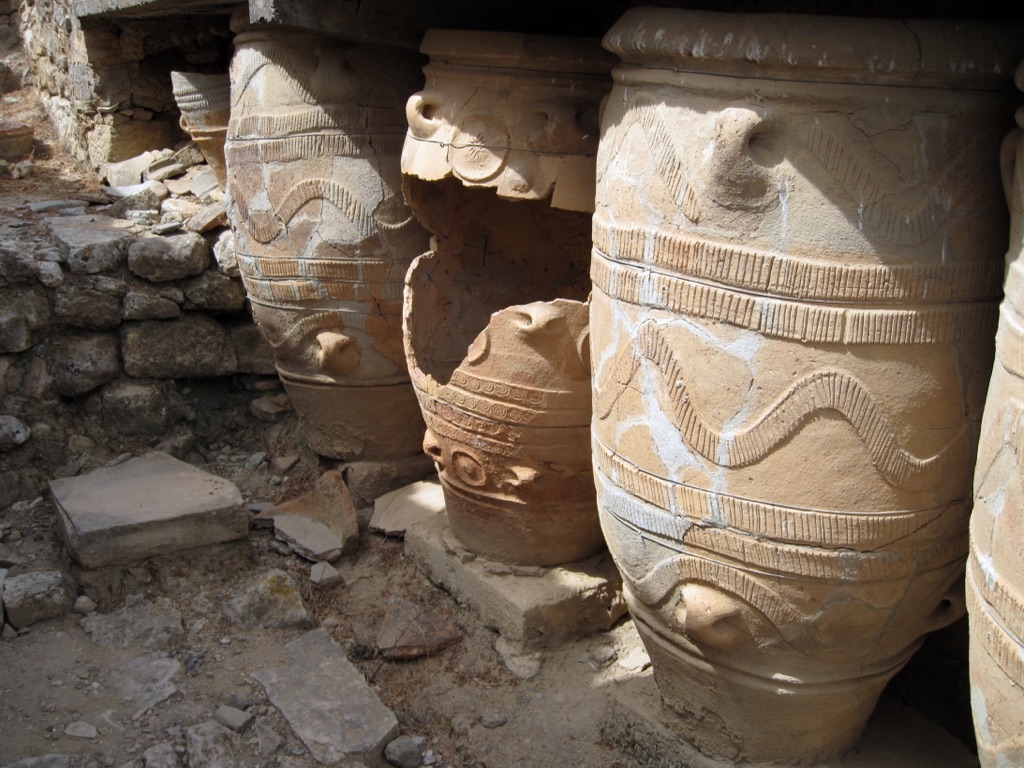
About Agia Triada
Agia Triada is renowned for its architectural and artistic achievements. The site encompasses a “mini-palace,” which is a smaller version of the grand palaces found in Knossos and Phaistos. The structures at Agia Triada were constructed using a combination of limestone and gypsum, materials commonly used by the Minoans. The buildings were designed with multiple stories, light wells, and elaborate drainage systems, reflecting the Minoans’ architectural sophistication.
The mini-palace itself contains a central courtyard, which was a typical feature of Minoan architecture. Surrounding the courtyard were various rooms used for ceremonial, administrative, and residential purposes. The site also includes a theater area, which suggests that the Minoans engaged in communal gatherings or performances. The presence of storerooms indicates that Agia Triada played a role in the economic life of the region, possibly as a hub for trade and distribution.
One of the most striking finds at Agia Triada is the frescoes that adorned the walls of the buildings. These frescoes depict scenes from nature, religious rituals, and everyday life, providing a vivid glimpse into Minoan culture. The artistry of the frescoes, with their vibrant colors and dynamic compositions, is a testament to the Minoans’ artistic prowess.
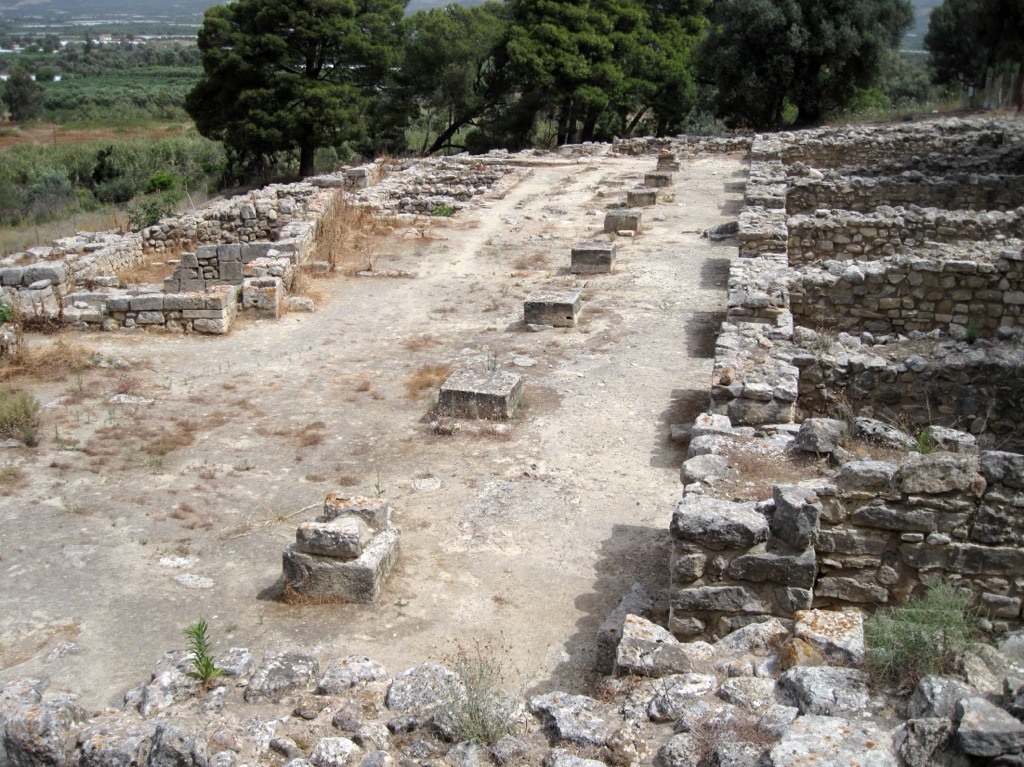
In addition to the frescoes, the site has produced a variety of artifacts, including pottery, stone vessels, and tools. These objects showcase the Minoans’ skill in crafts such as pottery-making, stone-carving, and metalwork. The artifacts found at Agia Triada are not only beautiful but also functional, indicating a society that valued both aesthetics and utility.
The layout of Agia Triada, with its complex of buildings and open spaces, reflects the Minoans’ urban planning capabilities. The site’s organization suggests a society that was highly structured and capable of managing its resources effectively. The archaeological evidence from Agia Triada continues to provide a window into the Minoan way of life, from their religious practices to their economic activities.
Theories and Interpretations
Agia Triada has been the subject of various theories and interpretations since its discovery. One of the most debated topics is the site’s function. While some scholars believe it was a royal villa, others suggest it may have been an administrative center or a religious sanctuary. The presence of the theater area and storerooms supports the idea that Agia Triada had multiple functions within Minoan society.
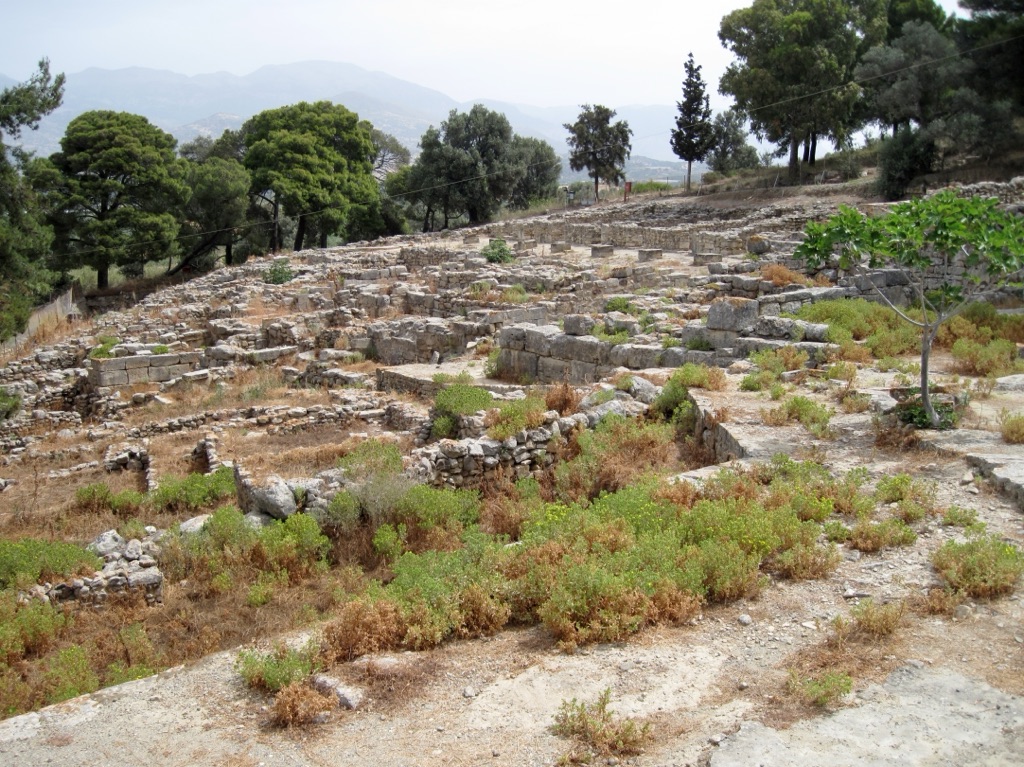
The Agia Triada Sarcophagus is a focal point for interpretations of Minoan religion. The scenes depicted on the sarcophagus have led to theories about Minoan funerary practices and beliefs in the afterlife. The iconography suggests a connection to Egyptian and Near Eastern religious motifs, indicating possible cultural exchanges.
There are also mysteries surrounding the site, such as the exact reasons for its decline. While the Thera eruption and subsequent tsunamis are often cited as contributing factors, there is also evidence of a gradual decline, possibly due to economic or social changes. The site’s later use by Mycenaeans and Romans adds layers of complexity to its history.
Historians and archaeologists have used various methods to date the site and its artifacts. Radiocarbon dating, pottery analysis, and stratigraphy have all been employed to establish a timeline for Agia Triada’s occupation. These methods have helped to place the site within the broader context of Minoan and Mediterranean history.
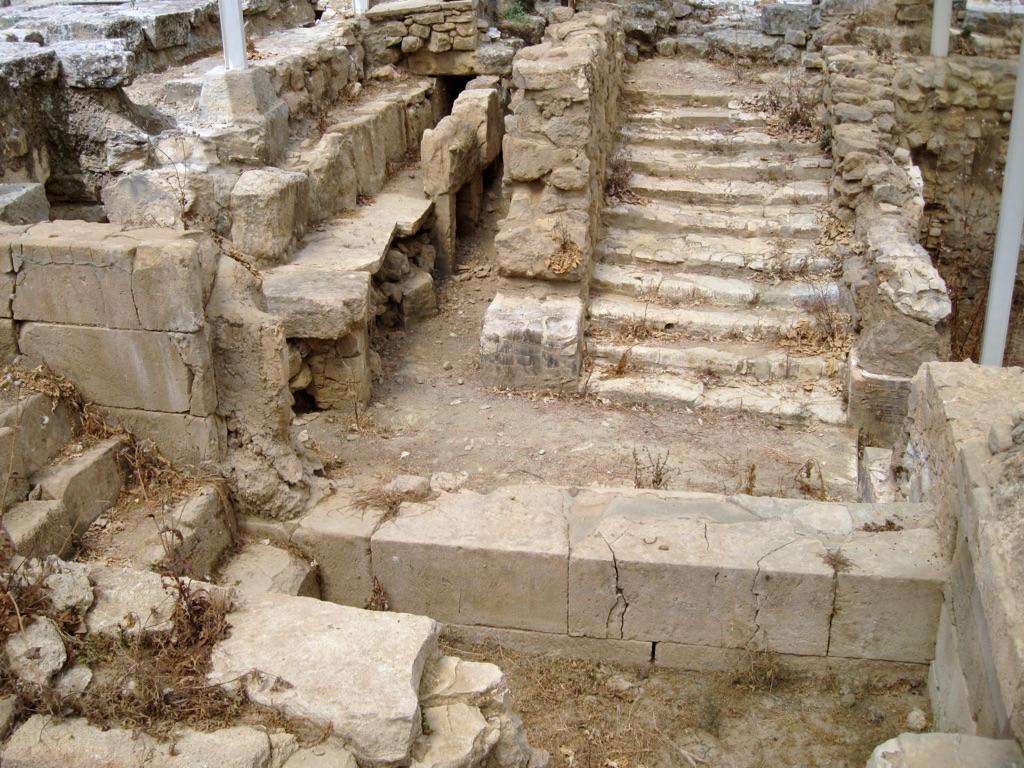
The interpretations of Agia Triada are continually evolving as new discoveries are made. Each artifact and structure provides additional pieces to the puzzle, allowing scholars to refine their understanding of the Minoans. The site remains a rich source of information for those seeking to unravel the mysteries of this ancient civilization.
At a glance
Country: Greece
Civilization: Minoan
Age: Approximately 2600 to 1100 BC
Conclusion and Sources
Reputable sources used in the creation of this article include:
- Wikipedia: https://en.wikipedia.org/wiki/Hagia_Triada

